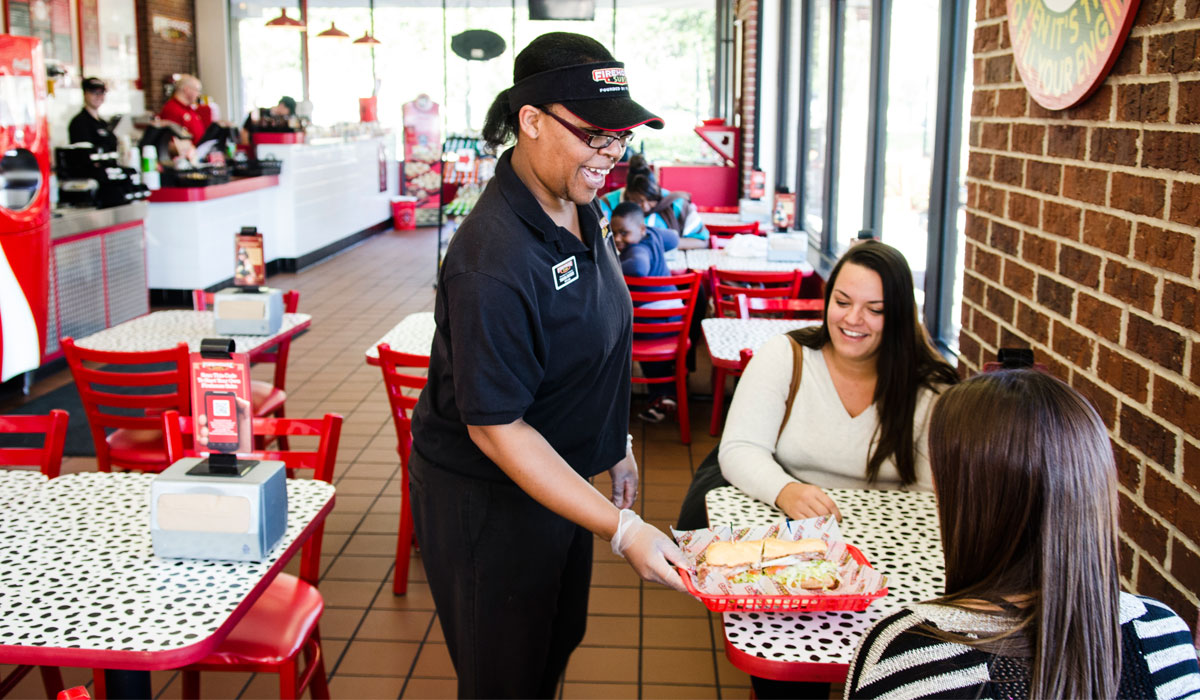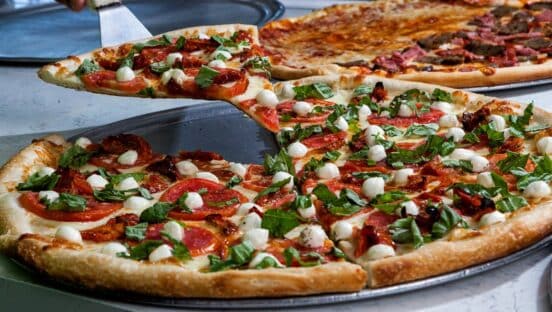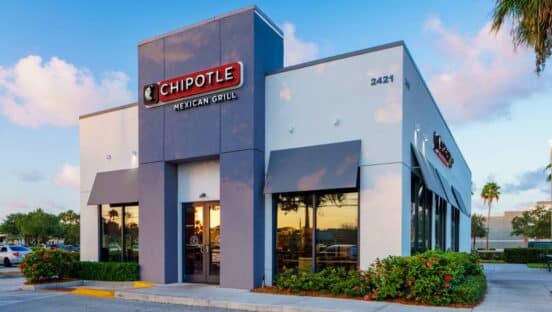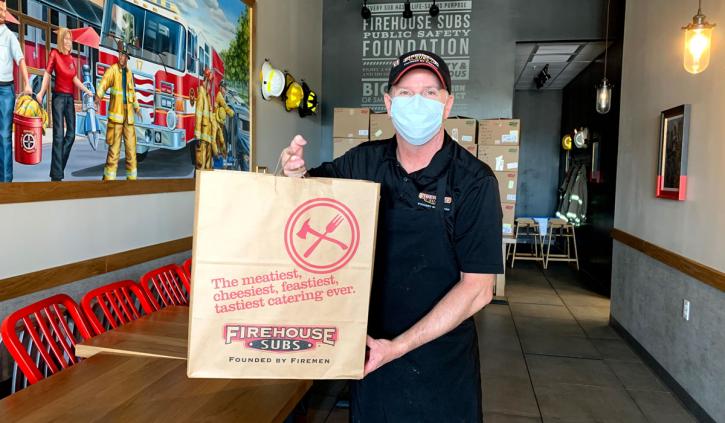
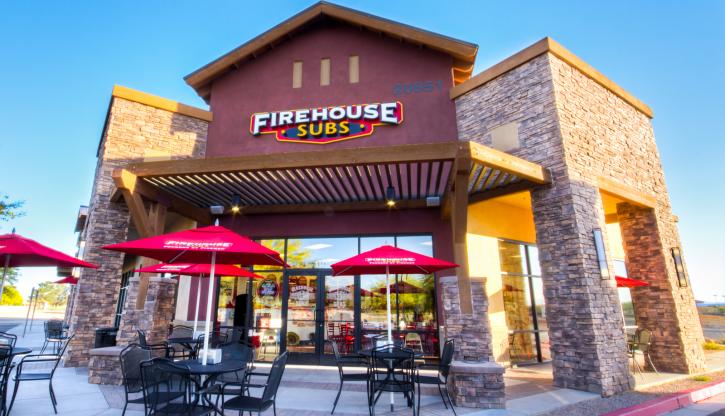
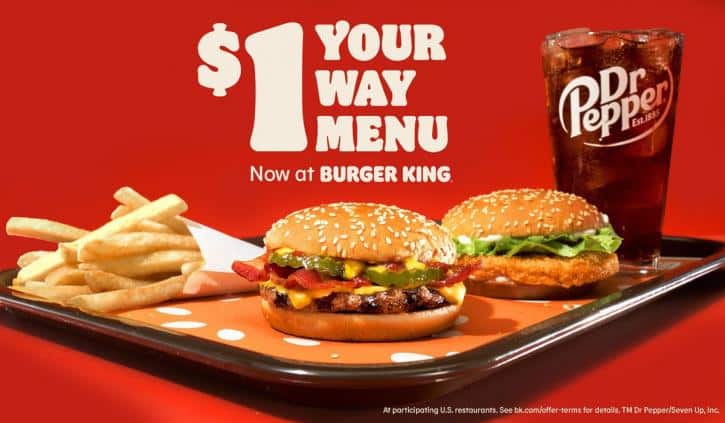
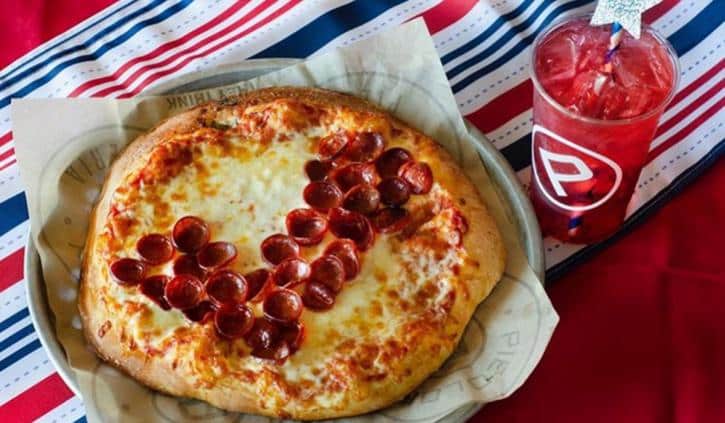
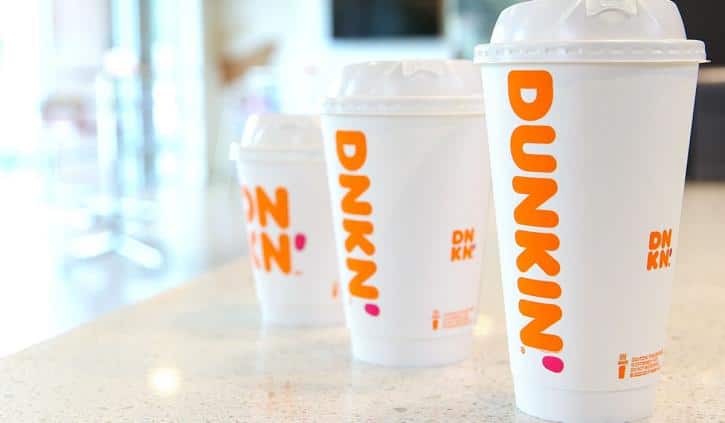
Looking to the past
The value wars. The rise of fast casual. The explosion of franchising. There’s no question the Great Recession played a major role in reshaping the restaurant industry. But now an even more profound change is unfolding as all businesses navigate a new type of economic downturn fueled not by the financial markets, but by a public health crisis.
While the coronavirus pandemic has unleashed unprecedented wreckage on the restaurant industry, some operators are looking back at the strategies that helped them through the last recession. After all, downturns of all kinds tend to birth new trends but also accelerate the changes already underway.
Take off-premises dining as an example. Government restrictions and public fear drove up demand for takeout and delivery in a big way. But consumers were already migrating away from the dining room.
At its peak, dine-in business accounted for 53 percent of sales at Firehouse Subs. By the beginning of 2020, that share had declined to about 37 percent as demand for off-premises increased and Firehouse got better at packaging and delivering its hot sandwiches. After dropping to zero in March as restaurants closed their dining rooms, that dine-in figure had improved to 11 percent by the fall, says CEO Don Fox.
Still, he doesn’t think it will ever fully bounce back. Not just because of the coronavirus, but because that’s where consumers were already heading. And from his viewpoint, it’s not a bad change. Knowing where the market is going will allow the brand to better design restaurants and kitchens for the future.
“Now we’re rising to the point that we would have otherwise fallen to,” he says. “This will be a blessing. We will arrive at that point of equilibrium. We’ll arrive at it faster rising from the bottom than we would have falling from the top.”
That’s a statement that could apply as much to the industry of a decade ago as today. We asked restaurant experts to weigh in on other ways the COVID-19 crisis might overlap with the Great Recession—and what operators should learn from that crisis in navigating through the pandemic.
React, but don’t retreat
Both the Great Recession and the pandemic required quick action from brands like Firehouse Subs. Twelve years ago, the chain ceased advertising collections from franchisees to keep them in business, fought to keep existing stores open, and continued opening new ones.
Even as sales in 2020 sunk by more than half, Fox says his company fought to avoid the impulse of implementing drastic, kneejerk changes. He says Firehouse labored to keep its corporate staff intact and halted royalty collections from franchisees in an effort to keep restaurants alive.
“We never gave up on growth even at the worst parts of the recession,” he says. “We are not ever going to dig a fox hole and just hide.”
While sales plummeted in the spring, Firehouse has enjoyed record sales in the months since.
Now the nearly 1,200-unit chain hopes to take advantage of the slew of restaurants that have closed across the country.
“We are going to attack 2021 with a great sense of opportunism to really take advantage of the environment we’re in,” Fox says. “There are a lot of weak players, less competition. This is the time more than ever.”
Like with the Great Recession, this downturn presents opportunities for strong operators to snatch up newly freed customers, employees, and real estate.
“Just about everyone I know looked death in the eye and accepted they could lose everything back in the spring. Then they picked themselves up and got back to work,” says Matthew Mabel, president of consultancy Surrender Inc., who noted that up to a quarter of all U.S. restaurants could close from the pandemic. “If you study all the past downturns, it’s people who invested during downturns that do well.”
Rethink the value proposition
While the Great Recession fueled price wars among chains, that strategy appears less enticing now.
“The value era is over,” Mabel says. “They’re going out less, but when they do go out, they’re spending more.”
He notes that customers increasingly order delivery on third-party apps—an action that has proved to hike the average spend at quick serves, especially considering the associated fees.
“The guest will understand because we have such goodwill,” he says. “We didn’t really have that in 2008. The guest might have missed us because they couldn’t afford us, but now they’re worried we will go away.”
Many chains also learned how hard it can be to move away from value-centered campaigns in the years following the last recession. Mark Brandau, an analyst with food industry research company Datassential, says brands struggled to “unring that bell” after the deep discounting they implemented during the recession. That’s especially true for casual-dining chains, which have struggled to move away from the 2-for-$20 sort of promotions that lingered for more than a decade.
Brandau says smart brands are looking at more creative value offers, like bundles that can feed a family or help stock the refrigerator. And innovative offers will go a long way in luring customers.
For instance, he says, a brand like Popeyes is getting much more mileage out of its uber-popular chicken sandwich nowadays than a brand like Wendy’s is getting from a 4-for-$4 meal.
“There’s a use and need for discounting,” he says. “But I think brands are getting better at realizing that can’t be the only thing you deploy in the downturn.”
Menu mix creativity
All downturns require resiliency and creativity. But never like this.
“You can’t survive in the COVID era with the old model,” says Kristi Turner, CMO of restaurant management software company Compeat. “You have to adjust.”
She urges restaurants to rethink their entire menu strategy. Instead of discounting a $15 pizza to $10, think about creating a package that includes wings, a six-pack of beer, and a board game. Or consider a package for a romantic date night at home.
“We are all stuck at home and we are all stir-crazy,” she says. “So give us something to look forward to.”
Restaurants should be working harder than ever to get to know their customers, Turner adds. That could be through data analytics and loyalty programs, but it’s also imperative to talk directly with the customers whose lives have also been upturned by the virus. “Where do they live? What do they do? What are they looking for?” she says.
Widespread price sensitivity during the Great Recession pushed many consumers away from casual dining. Trading down to limited-service options fueled not only the rise of fast casual, but also the need for all brands to rethink their menus, says Tom Cook, a principal with strategy consultancy King-Casey.
Now the industry is seeing similar innovation as brands try to get through the pandemic. He points to Panera’s recent addition of pizza and Shake Shack’s foray into the drive thru.
“People are totally reinventing their businesses,” he says.
Like the recession, the coronavirus has forced restaurants to take a hard look at their entire operations. They’re scrutinizing every line item and the smart operators are looking at simplifying their menus, Cook says. Equally important is right-sizing staffing to control labor costs.
While some lessons translate, Cook says, the scale of the economic devastation caused by the pandemic far outweighs what operators saw last time around. “This was potentially catastrophic and will be catastrophic for many restaurants,” he says. “I don’t think you’re going to see anybody get comfortable in this industry anytime soon.”
Rethink old relationships
Both the Great Recession and the COVID-19 downturn have proven particularly devastating to independent operators who lack financial backing of big brands.
As restaurants fight through the doldrums of this recession, Cook expects to see more mergers and acquisitions as brands partner together for strength. While he expects the weakest players to be gobbled up, he says Inspire Brands’ $11.3 billion purchase of Dunkin’ Brands shows that anything can happen.
“That’s a great brand,” Cook says of Dunkin’. “You wonder why they are being acquired. Why are they selling themselves? If they’re doing that, can you imagine what some of these other lower-tier or mid-tier restaurant brands are doing?”
He says private equity will likely dig even deeper into the industry, putting more chains under common ownership umbrellas.
“These private equity firms buy when everybody else is scared to death,” he says. “When the markets are really bad, that’s fertile ground for them. So they go in there and swoop these concepts up.”
The pandemic has accelerated the adoption of virtual brands and ghost kitchens. That may continue on with casual restaurant locations turning into mini food halls, says Jim Balis, managing director of restaurant investment firm CapitalSpring. Similarly, he expects quick-service and fast-casual brands will increasingly explore co-branded locations, similar to Yum! Brands’ combined Taco Bell and KFC storefronts.
“Can I run three brands out of one box?” Balis says. “I wouldn’t be surprised if you start to see more of that. You’re seeing that in the virtual space; why not in the multi-branded space as well?”
Similar to the Great Recession, some experts expect the pandemic to further push the industry toward limited-service options. Dennis Monroe, a veteran in restaurant financing and chairman of law firm Monroe Moxness Berg, says that will likely reshape casual-dining brands, which will increasingly look to add grab-and-go and delivery options.
“People are going to move toward convenience,” he says. “Come back in five years and you’ll see Applebee’s and all the Dardens look more like fast-casual, [quick-service] restaurants.”
While the Great Recession temporarily changed customer demand, the pandemic may permanently reshape consumer preferences.
“A lot of it depends on how long this goes on. If it goes on through the summer, you’re going to see behavior pretty much change for years to come,” Monroe says. “Think about the 1960s and the creation of [the quick-serve industry], how much changed because of everybody buying cars. … I think we’re going to see the same change from this.”
The pandemic has created new levels of real estate disruption and opportunity as restaurants close. But operators have enjoyed unprecedented levels of support this time. Banks, which all but froze lending in the years following the last downturn, have been helping restaurants apply for federal relief loans and working out flexible repayment plans.
Likewise, some landlords have offered deep rent concessions or outright forgiveness to help tenants survive.
“We’ve created a good environment for cooperation because we’ve had to,” Monroe says.
That cooperation will likely live on, both with financial institutions and landlords. The pandemic has also created another silver lining: a renewed sense of loyalty between management and employees.
During the crisis, desperate managers have shared financial information with their crews. They’ve worked together to keep staff and customers safe. Even with high unemployment in the industry, those that remain employed have likely witnessed a fundamental change in their relationships with employers—unlike anything experienced during the Great Recession.
“In the past, an employee would never know if you’re making money unless you’re in management,” Monroe says. “Now they share everything, and that’s something that’s hard to go back on. Once you let employees under the tent, they’re going to stay there.”

